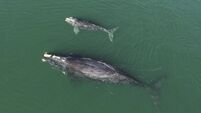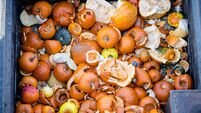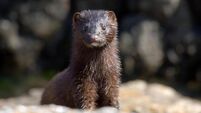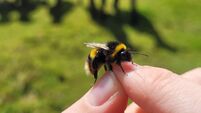Anja Murray: Seagrass meadows and other Irish marine life marvels
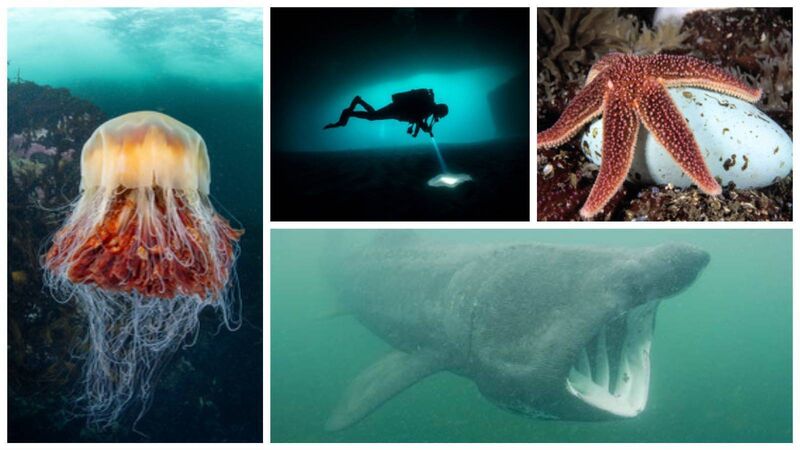
Left to right: Jellyfish, Skellig Michael; Cave diving, Inis Mór; Single starfish and egg; basking shark. Featured in Beneath Irish Seas — The Hidden Wonders of Ireland's Amazing Marine Life, by Nigel Motyer
All around Irish coasts, seagrass grows in shallow waters and brackish estuaries...
Luminous green fronds sway in salt water and shelter a wealth of marine life.
Pipefish, with their extravagant long snout, position themselves upright in line with the seagrasses, expertly camouflaged among the shapes and textures of the seagrass covered seabed.
Seahorses, closely related to pipefish, wind their curly tails around strong, green fronds and change colour easily in order to blend in with the blues, greens and yellows of the seagrass meadows.
Brightly-coloured sea anemones attach themselves to seagrass, using their tentacles to feel for passing sea creatures and paralyse their intended prey.
Shrimp gather where the greenery absorbs the force of waves and currents, feeding on the richness of plankton.
Crabs of many species, size and colour scuttle about on the seabed, sheltered and fed by the richness of life that the seagrass sustains. Intricately patterned and often iridescent sea snails graze on marine algae and prey on smaller creatures, depending on their ilk. At low tide, overwintering brent geese feed on seagrass too.
Seagrass meadows are among the most productive ecosystems on the planet and aside from all the invertebrate life they are home to and all the seabirds they help sustain, many of our most commercially valuable fish rely on seagrass meadows too. Crab and scallops thrive in these areas, alongside wrasse and red mullet. Cod and several flatfish species are among the many who lay their eggs in seagrass, where the sheltered conditions also offer ideal nursery conditions for juvenile fish.
Because of their enormous ecological value, as well as the ecosystem services they provide, seagrass beds have been prioritised for protection and restoration under the new Nature Restoration Regulations, adding to the legal protections already offered by the European Birds and Habitats Directives. Now, with new data collected by citizen scientists, there is growing hope that many of the seagrass beds around Ireland will be given some respite from harm in order for restoration to proceed.
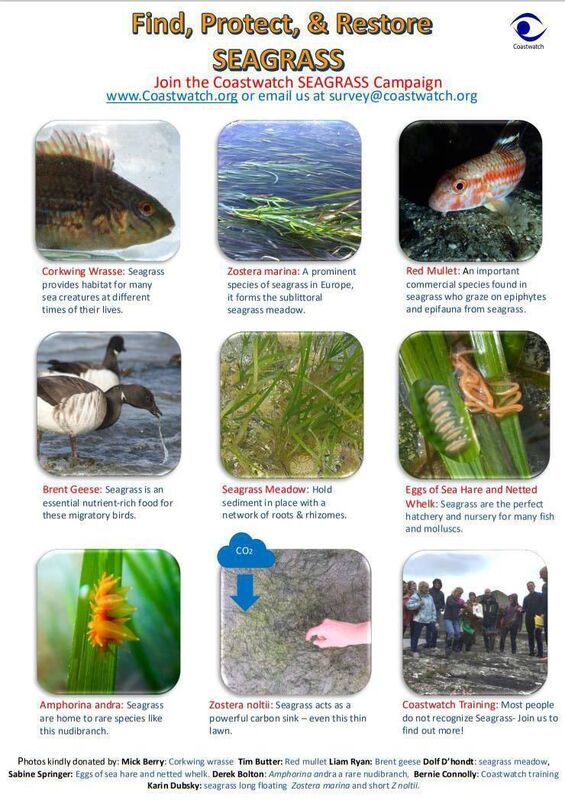
Last week a new national map of seagrass beds around Ireland was published by a volunteer-led team at Coastwatch Ireland. The map is the culmination of many years of seagrass surveys by volunteer citizen scientists, including swimmers, kayakers, paddle borders, lifeguards, divers, and fishers, all working closely with marine scientists and renowned ocean advocate, Karin Dubsky. Their efforts contribute to the national shortfall in knowledge about where seagrass habitats occur, with carefully collected survey data filling in the many information gaps about the extent of seagrass meadows around Irish shores.
One of the participants, Dublin lifeguard and diver, Gordon Leonard, saw a seagrass bed just at the shore in Sandycove, County Dublin. He reported the find to the Coastwatch team, who identified the seagrass he had found as a species previously unknown to the east coast. Now an active member of the national Coastwatch team of volunteers, he is enthusiastic about how this seagrass bed is being actively monitored by the Sandycove Kayak Club, whose members are also passionate about coastal conservation. One of the Clare-based surveyors confirmed the tallest seagrass beds yet, with fronds exceeding 1.5 metres.
These are just two examples among 89 previously unrecorded seagrass meadows that have now been mapped and included in a national database, thanks to volunteer efforts. As part of this national survey, a total of 22 new seagrass beds have been confirmed for county Cork; 12 new sites off the coast of Wexford; 14 around the Kerry coast; 8 in Clare, 9 in Galway, and many more in Mayo, Sligo, Donegal, Louth, Dublin and Waterford. It is hoped that each newly identified seagrass bed, now added to a national database, will be monitored by the EPA and protected by NPWS and licencing authorities as part of existing legal obligations to protect and restore seagrass beds here.
While some of the newly confirmed seagrass beds are thriving, and some even expanding since their discovery, at least 5 of the newly identified areas have been severely damaged or lost entirely since the start of the survey. Fishing boats that drag dredges or trawls across the seagrass in order to extract native oysters often end up uprooting the seagrass and destroying the beds where they dredge. Sewage pollution results in a slimy toxic sludge that chokes up the seagrass and smothers the creatures that live there. Excess nitrates from agricultural land can also feed problem algae which deprives creatures of vital oxygen. Invasive seaweeds are a significant threat too. Increasing frequency and severity of marine heat waves and storms resulting from climate change are adding to the pressure on marine life.
Conversely, protection and restoration of seagrass beds is a significant climate change mitigation and adaptation measure. As they grow, seagrasses actively draw down carbon and store it away in the sediment where these plants are rooted. If left undisturbed, the carbon can be stored for thousands of years. In this way, seagrass beds contribute an estimated 10% of the ocean’s total burial of carbon. Seagrass meadows contribute to climate change adaptation by absorbing wave energy and thus attenuating the impact of coastal storms on the shore.
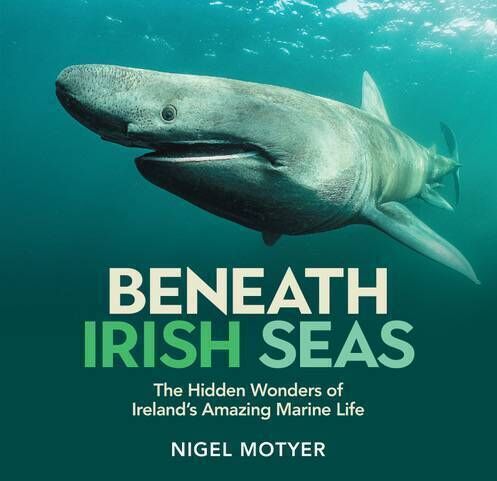
Coincidentally, seagrass meadows are one of the marvels of Ireland’s marine life showcased in a new book published this week by renowned underwater photographer Nigel Motyer. is a feast for the eyes, a kaleidoscope of colour across more than 200 pages of compelling underwater images. Having spent decades as an underwater photographer, working for among others, this a photographer who not only documents what he sees, but offers us a wondrous glimpse in to a world that few of us have ever seen. There are sublime looking sea anemones, shapely corals, camouflaged pipefish, elaborately patterned starfish, flamboyant peacock worms, burrowing langoustine, psychedelic sea squirts, colourful sea sponges, playful seals, sublime looking jellyfish, diving puffins, majestic basking shark gatherings and a lot more besides.



